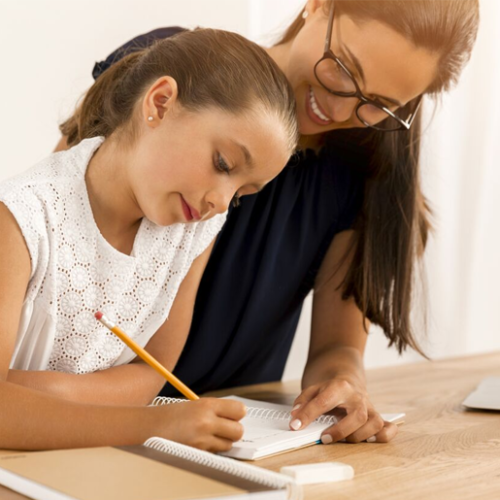Five tips for your child’s internet safety

With huge amounts of harmful content and disinformation flooding the internet, it’s a good time to recap on how to keep our children safe online.
The internet is evolving constantly and at a rapid pace. Many mums probably feel like they have a pretty good understanding of how to keep children safe online. With that being said, it’s well worth going back over some of the dos and don’ts, as new challenges and dangers are cropping up daily.
Create agreements
As a family, come together to set out some agreements or ground rules when it comes to internet use. It’s best to foster an environment where you can chat openly with your children about their activity online. Ideally, parents should be aware of who their children are interacting with online and what content they are consuming. The internet is a very enticing place and it doesn’t really come with a set of instructions. It’s your job to teach your little one some of the basics. Let them know that everything that they do online, whatever they post, comment, search or watch, will be recorded somewhere. This isn’t supposed to frighten them – it’s simply laying out some of the truth behind the online world.
Encourage your child to engage with the internet (and the other people on it) in a positive manner, and as you would expect them to behave in the real world. Let them know if they encounter anything negative, that you will be there to help them handle it. Working together is crucial to maintaining your child’s safety.
Go online together
One of the best ways to lay the foundations for healthy internet usage is to venture into the online space together. You can call family members, look up videos together and try learning something new. These actions will help your little one to explore the internet in a safe environment.
Encouraging your child to lead the way, you can use these times to highlight any traps that you may come across. Whether it’s disinformation, unsafe websites or inappropriate content, it’s important that you teach your child how to recognise these. There are countless ways in which the internet can be harmful for children. They may be exposed to all kinds of unsuitable content that might try to influence them one way or another. Armed with the knowledge of how to spot online danger, your child will be off to a good start!
Protective software
One benefit of the booming software industry is that there are a number of tools that parents can use to ensure their child stays out of harm’s way while spending time online. Starting with your child’s device, or the device that they will be using to go online, make sure that the security software is up to date. This will reduce the chances of them getting into trouble online. Similarly, check the privacy settings are set to the highest level and that data sharing is minimised.
Only use trusted sources for internet security software and regularly check that the device’s privacy settings haven’t been changed, due to updates or otherwise. With these security boxes ticked, your little one can browse away in a sheltered manner.
Role model healthy use
With all the best intentions, some parents can fall at the final hurdle when it comes to safeguarding their children online. Even if you have laid out strong ground rules, downloaded the latest security software and have spent time together online, it can all fall apart if you don’t interact with the online world the way you’re asking your child to. The internet can be a scary and dangerous place for adults too! Try to keep your own boundaries around screen time intact and your child will mirror this. By setting an example for them to follow, it will be easier for your little one to develop a positive relationship with the internet.
Let them have fun
Last but not least, let them breathe! It doesn’t all have to be doom and gloom – the internet is a source of entertainment, fascination, education and lots of creativity too. This isn’t about demonising the internet, it’s about learning to approach it in an informed and prepared way. So once you’re happy your pride and joy is safe, and keeping you informed of their internet activity, allow them to have fun online. Whether it’s chatting with friends, gaming or making art, spending time online can be so fruitful.
Just remember to check in with them regularly and with genuine curiosity. Once you develop this relationship, they are far more likely to show you what they’re doing online and not hide any activity from you. Remind them that if they come across anything unsettling while on the internet, that you are there to help them.
Balance
With all that said, we should be teaching our children how to balance their online and offline time. The line between these two is much less clear for younger generations so it helps to encourage them to maintain an active lifestyle, meet friends in person and take part in non-digital pursuits too.
Image Credit: ShutterStock











Comments